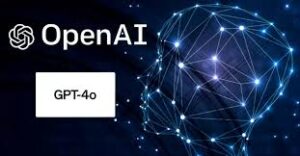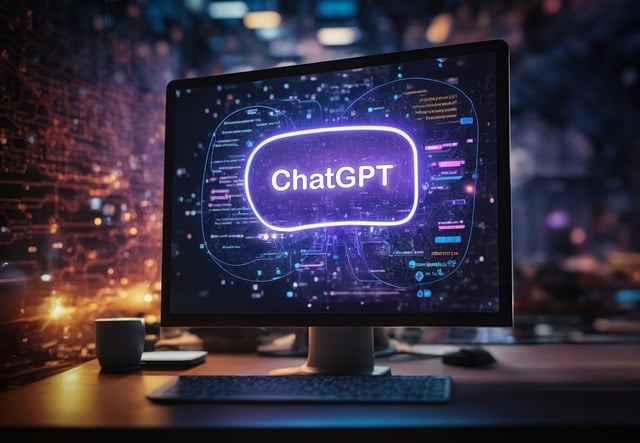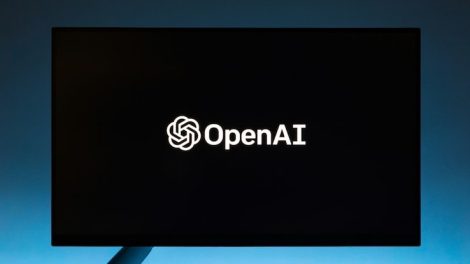OpenAI has once again made headlines with the launch of its latest iteration in artificial intelligence, GPT-4o. This update builds on the legacy of its predecessors, cementing OpenAI’s position at the forefront of AI innovation. With GPT-4o, OpenAI has introduced a range of advanced capabilities, delivering unprecedented performance across various applications, from natural language understanding to real-world task automation. The release has sparked conversations worldwide about the transformative potential of this cutting-edge AI model and how it compares to others in the market.

In this article, you will discover why GPT-4o is being hailed as a game-changer, how it achieves its enhanced performance, and what this means for businesses, researchers, and everyday users. We’ll also explore the competition, highlighting the ways GPT-4o positions itself ahead of rivals in the AI domain. This deep dive will unravel the technological brilliance behind the model, showcasing why it has reclaimed its title as the best AI model available today.
The Journey from GPT-3 to GPT-4o
To understand the significance of GPT-4o, it’s essential to revisit its lineage. OpenAI’s GPT series began with GPT-1, a model that introduced transformer-based AI to the world. With GPT-2 and GPT-3, OpenAI pushed boundaries, creating models capable of human-like text generation. GPT-4 took things even further, enhancing reasoning abilities and enabling more sophisticated interactions.
The introduction of GPT-4o marks another leap forward. This model addresses several challenges faced by its predecessors, including improved contextual understanding, reduced bias in responses, and better adaptation to specialized tasks. These advancements make GPT-4o not just an update but a revolutionary step in AI development.
Key Features of GPT-4o
GPT-4o sets itself apart with a host of new features designed to enhance both usability and accuracy. One of the most notable improvements is its capacity for multi-modal input processing. Unlike earlier models that primarily handled text-based inputs, GPT-4o integrates text, images, and even audio seamlessly. This multi-modal capability enables users to interact with the AI in more intuitive ways.
For instance, if you provide an image of a complex graph, GPT-4o can analyze it, interpret the data, and explain trends—all in a conversational manner. Similarly, when combined with audio inputs, the model can transcribe, analyze, and respond to voice-based queries with remarkable precision.
Another groundbreaking feature is its dynamic memory capabilities. GPT-4o can retain context over extended interactions, making it ideal for applications requiring long-term engagement, such as customer support or tutoring. This feature ensures continuity and reduces the need for repetitive explanations, offering a more personalized user experience.
Additionally, OpenAI has refined the model’s token management. With an extended token limit, GPT-4o can process significantly larger datasets and produce more comprehensive responses. This improvement is particularly beneficial for researchers working on complex analyses and developers building applications that rely on in-depth conversations.
Enhanced Performance in Real-World Applications
The real-world implications of GPT-4o’s advancements are profound. Businesses are already leveraging the model’s capabilities to streamline operations, improve customer experiences, and enhance productivity. For instance, customer support teams can deploy GPT-4o-powered chatbots to handle queries more effectively, reducing response times and improving satisfaction rates.
In the education sector, GPT-4o serves as an invaluable tool for personalized learning. Students can use the AI to clarify concepts, receive tailored feedback, and explore topics in-depth. With its ability to process multimedia inputs, GPT-4o can make learning more interactive and engaging.
Healthcare is another domain where GPT-4o is making a significant impact. Medical professionals use the model to analyze patient data, suggest diagnoses, and even draft medical reports. Its advanced natural language processing capabilities allow it to handle sensitive information with care and precision, ensuring high levels of reliability.
Developers, too, are reaping the benefits of GPT-4o. OpenAI has provided robust APIs that make it easier to integrate the model into various platforms. This flexibility allows developers to create innovative applications, ranging from virtual assistants to creative tools, all powered by the unmatched intelligence of GPT-4o.
A Competitive Edge in the AI Market
In a competitive AI landscape, GPT-4o distinguishes itself through its superior performance and user-centric design. While competitors like Google’s Bard and Meta’s Llama have made strides in specific areas, GPT-4o offers a more comprehensive solution.
A key factor in GPT-4o’s dominance is its training data. OpenAI has utilized a vast dataset, incorporating diverse sources to ensure the model is well-rounded and capable of handling a wide array of queries. This approach minimizes bias and enhances the model’s understanding of nuanced topics.
Moreover, OpenAI has placed a strong emphasis on ethical AI development. With GPT-4o, the company has introduced mechanisms to mitigate harmful outputs, ensuring the model adheres to ethical guidelines. This commitment to responsible AI sets GPT-4o apart from its rivals, making it a trusted choice for businesses and individuals alike.
The Road Ahead: What GPT-4o Means for the Future
GPT-4o is not just a tool for today but a foundation for the future. OpenAI’s vision extends beyond creating a powerful AI model; the company aims to build an ecosystem where AI seamlessly integrates into daily life.
Looking ahead, GPT-4o’s advancements pave the way for more sophisticated AI applications. From autonomous vehicles to smart cities, the possibilities are endless. OpenAI’s commitment to innovation ensures that GPT-4o will continue to evolve, adapting to emerging needs and challenges.
Comparing GPT-4o with Other Models
To fully appreciate GPT-4o’s capabilities, it’s helpful to compare it with other AI models. Below is a table highlighting key differences between GPT-4o and its main competitors:
| Feature | GPT-4o | Google Bard | Meta Llama |
|---|---|---|---|
| Multi-modal Input | Yes | Limited | No |
| Token Limit | Extended | Standard | Standard |
| Ethical Safeguards | Comprehensive | Partial | Limited |
| Contextual Memory | Dynamic and Extended | Basic | Basic |
| API Flexibility | High | Moderate | Low |
This table underscores GPT-4o’s superior functionality, making it the preferred choice for diverse applications.
OpenAI’s GPT-4o represents a monumental leap in artificial intelligence. With its enhanced features, ethical safeguards, and user-focused design, the model has set a new benchmark in the AI industry. Whether you’re a business looking to optimize operations, a researcher delving into complex topics, or an individual seeking a reliable virtual assistant, GPT-4o offers unparalleled capabilities.
As the AI landscape continues to evolve, GPT-4o stands as a testament to OpenAI’s dedication to innovation and excellence. Its release is not just an upgrade; it’s a statement of what’s possible when technology is harnessed responsibly and creatively. With GPT-4o, OpenAI has reclaimed its crown as the leader in artificial intelligence, setting the stage for a future where AI enriches every aspect of human life.










Add Comment